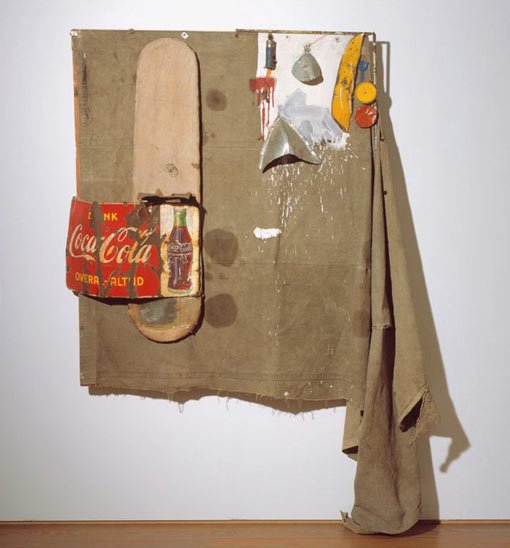The future is now

Focus works
Robert Rauschenberg
USA 1925–2008
Dylaby 1962
oil, metal objects, metal spring, metal Coca-Cola sign, ironing board,
and twine on unstretched canvas tarp on wood support
Robert Rauschenberg Foundation
© Untitled Press Inc/VAGA. Licensed by Viscopy, Sydney
In the mid 1950s, Robert Rauschenberg sought a greater connection between art and life, famously declaring his ambition was to ‘act in that gap between the two’. He used collage and assemblage to incorporate everyday materials into his work, an approach that subsequently influenced many artists around the world.
The two works on display, both titled Dylaby, were part of an installation Rauschenberg made for the exhibition Dylaby: dynamic labyrinth in 1962. They are both ‘combines’, the term Rauschenberg coined to describe his works that combined elements of both painting and sculpture, and found material such as the Coca-Cola sign and ironing board you see here.
See also
This work also appears in the adult (7-12) and children’s (K-6) audio guides, available for rent, and in the free children’s trail.
Issues for consideration
- Create a body of work titled The future is now. Think about what this concept means and how it is relevant in today’s world. Compare your work to Rauschenberg’s art practice. What is similar or different?
- What has Rauschenberg done to 'act in the gap between art and life’? Do you think he has successfully fulfilled his aim?
- Imagine you are an art critic in the 1960s and are seeing these works titled Dylaby for the first time. Write a critique, including the works’ relevance in art history to that point in time.